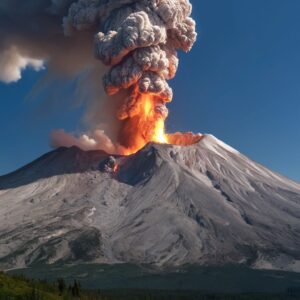At 8:32 a.m. on May 18, 1980, the north face of Mount St. Helens exploded with the force of 500 atomic bombs. What had begun as a series of small earthquakes and venting plumes became the deadliest and most economically devastating volcanic eruption in U.S. history.
Fifty-seven people died. Hundreds of homes, bridges, and miles of road were destroyed. Ash turned daylight to dusk across eleven states. Entire forests were flattened. And for many, the serene image of a snow-capped peak in Washington State was replaced forever by a smoking crater and a lesson in humility.
The warning signs had been there—rumbles beneath the surface, growing bulges on the mountain’s flank—but predicting the moment of eruption proved elusive. Scientists and emergency officials worked urgently, sometimes at odds with loggers and locals who didn’t want to abandon their land. It was a tragic example of how even with all our technology and planning, nature still holds the upper hand.
Yet amid the destruction, stories of survival and resilience emerged. Emergency crews raced into danger. Geologists gained invaluable insights into volcano behavior. And the landscape itself began a slow rebirth, offering scientists a rare laboratory of natural regeneration.
Mount St. Helens was not just a geological event—it was a cultural shock. It reminded a modern nation that even in the age of satellites and seismic networks, nature can still catch us off guard. And it reinforced a timeless truth: respect for the earth must always include an understanding of its raw, unpredictable power.

